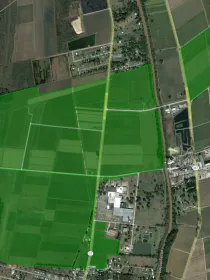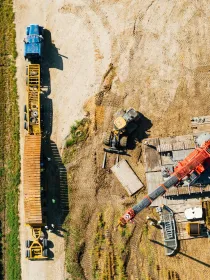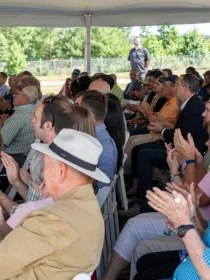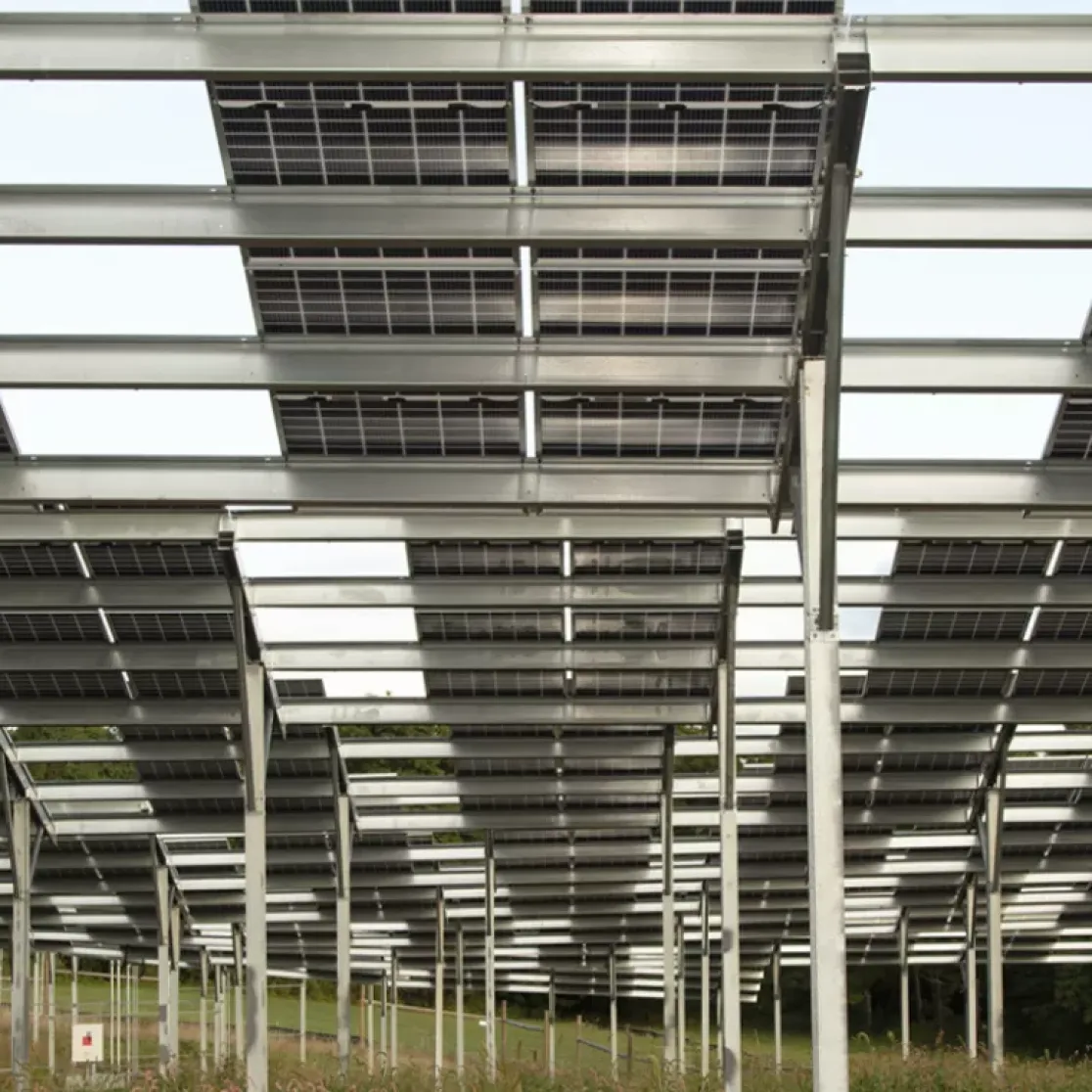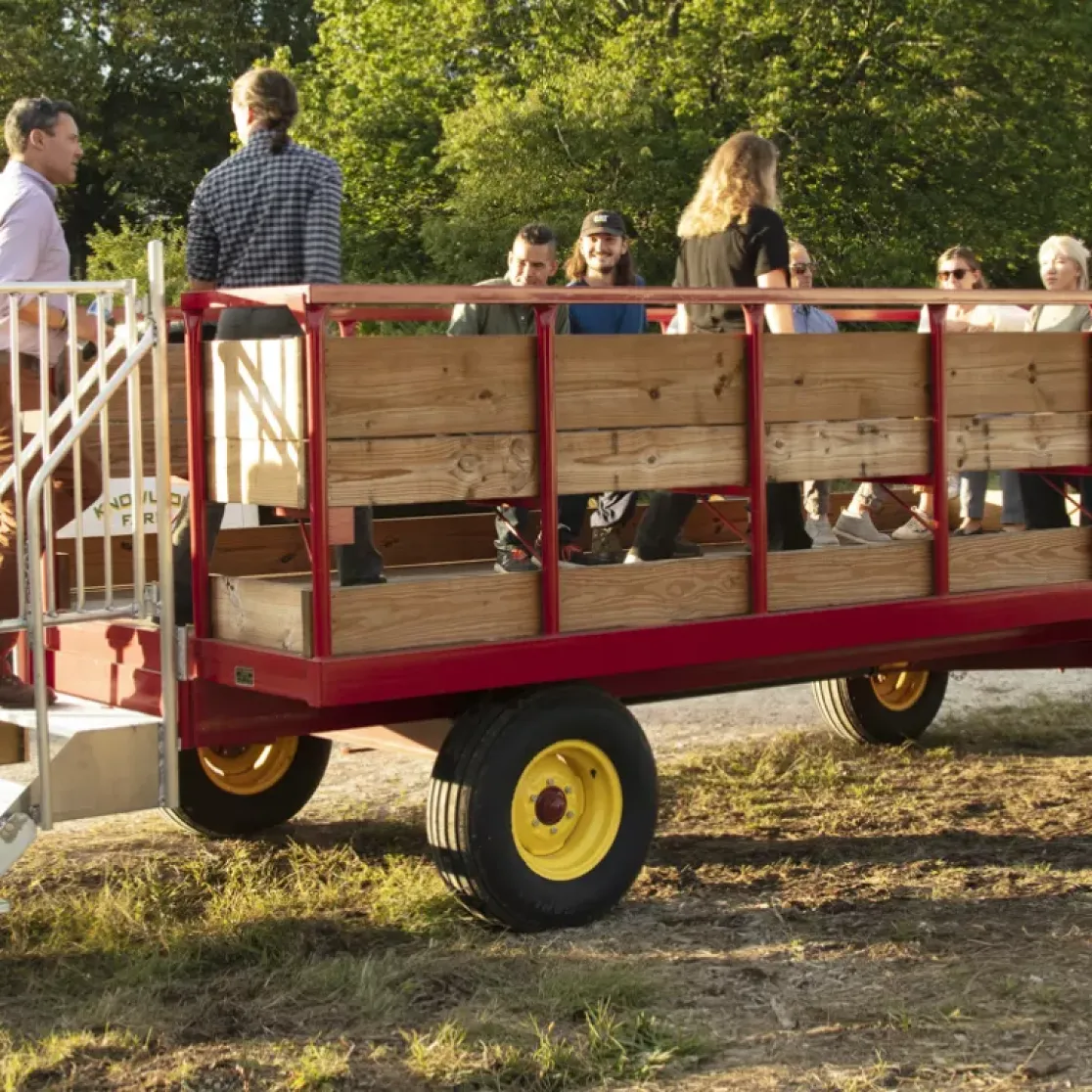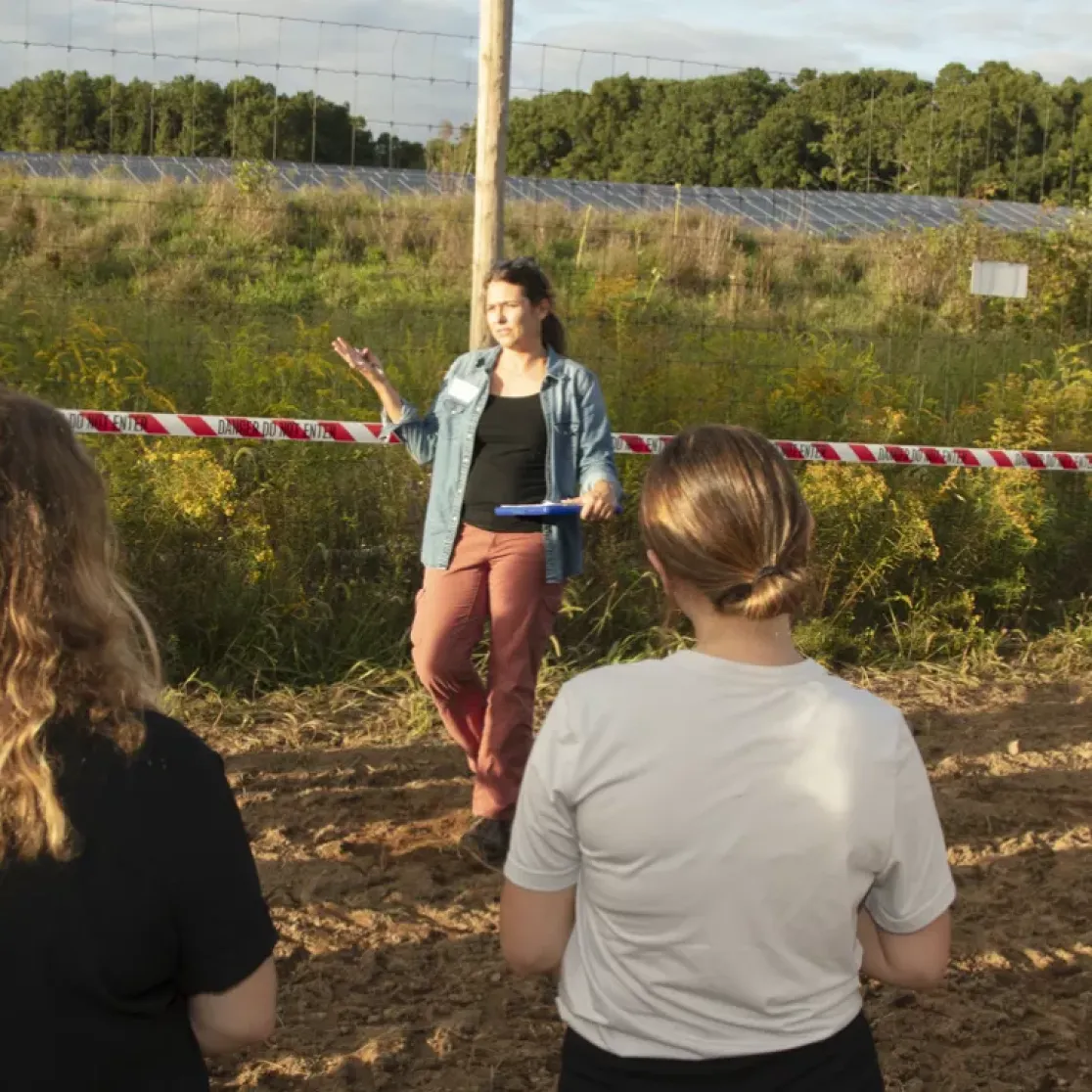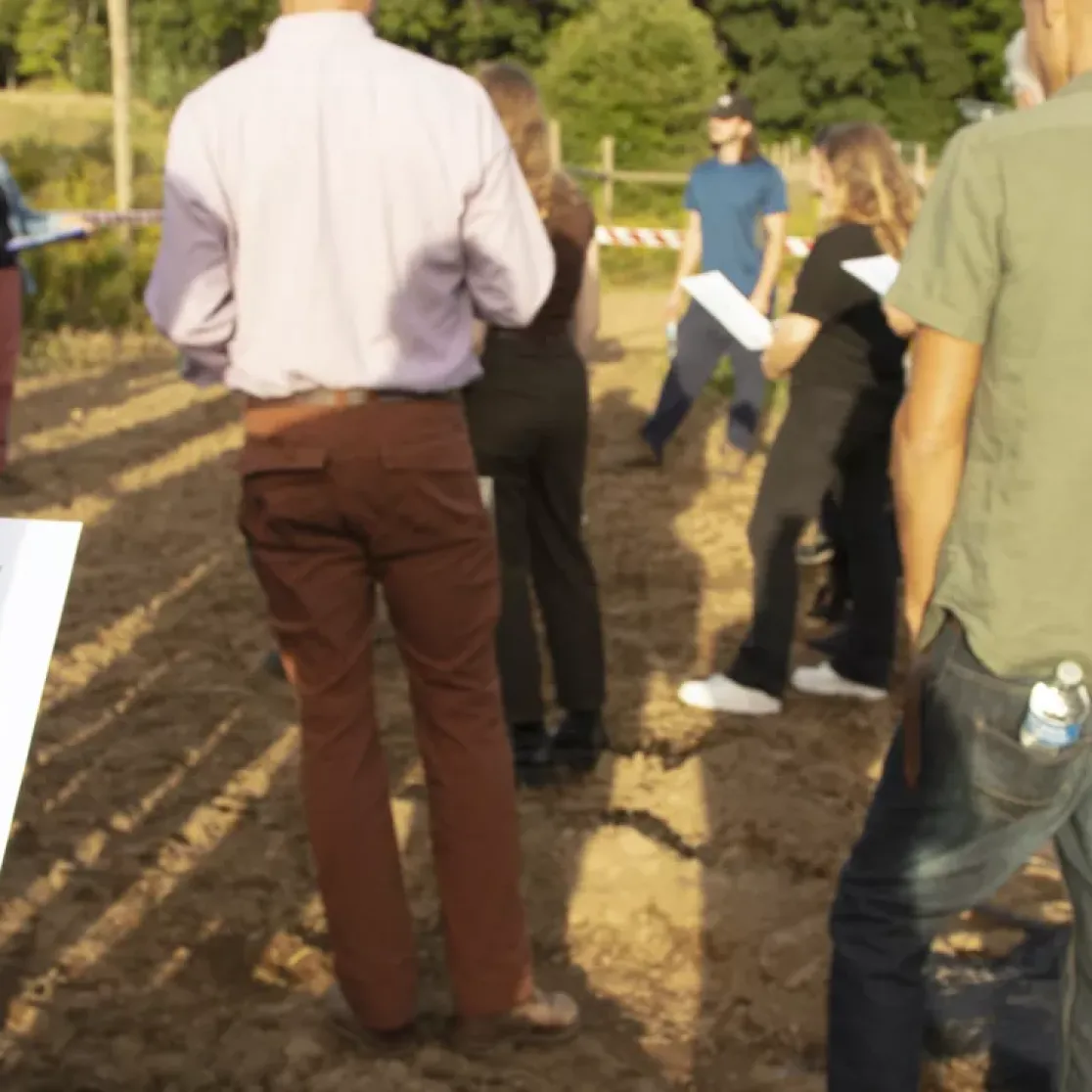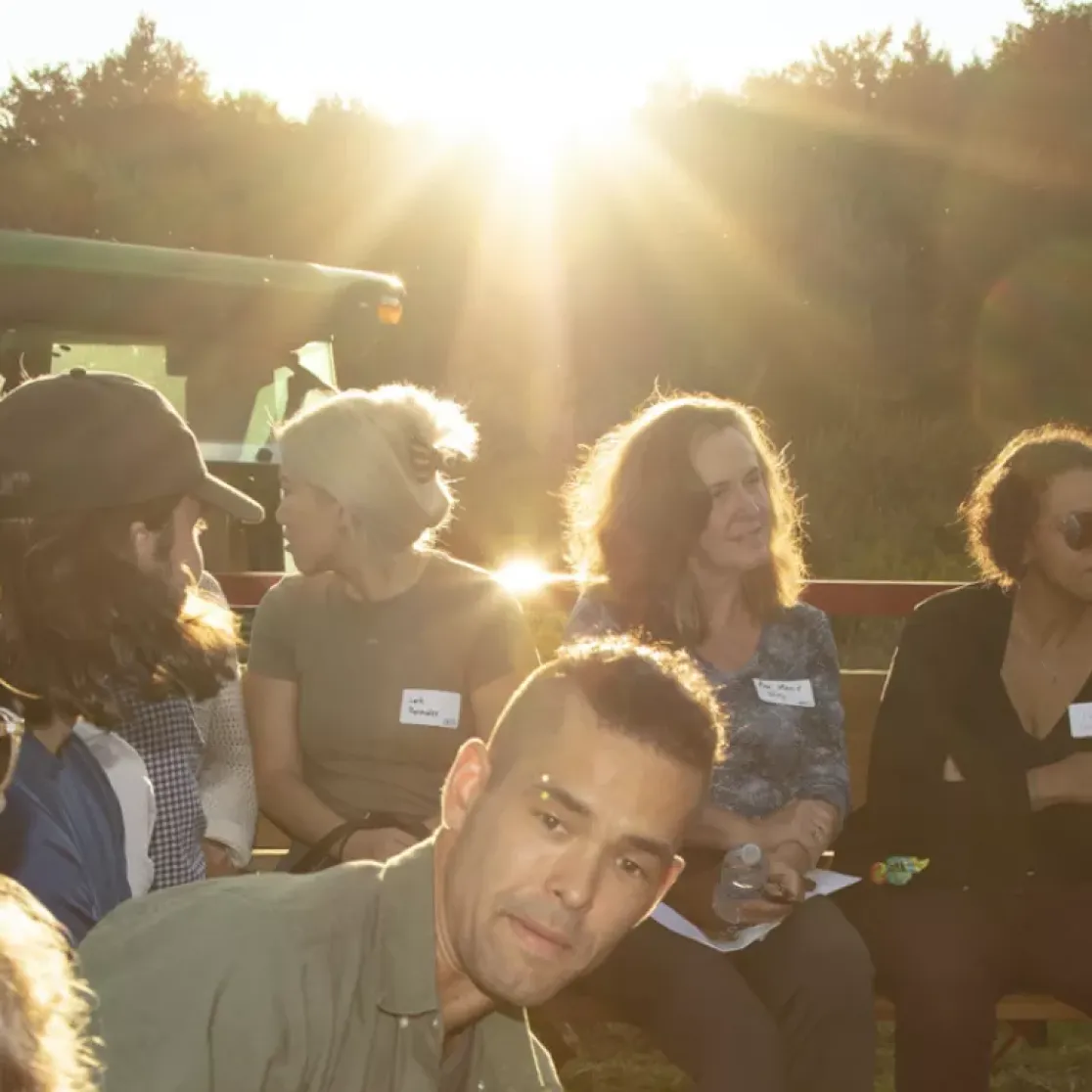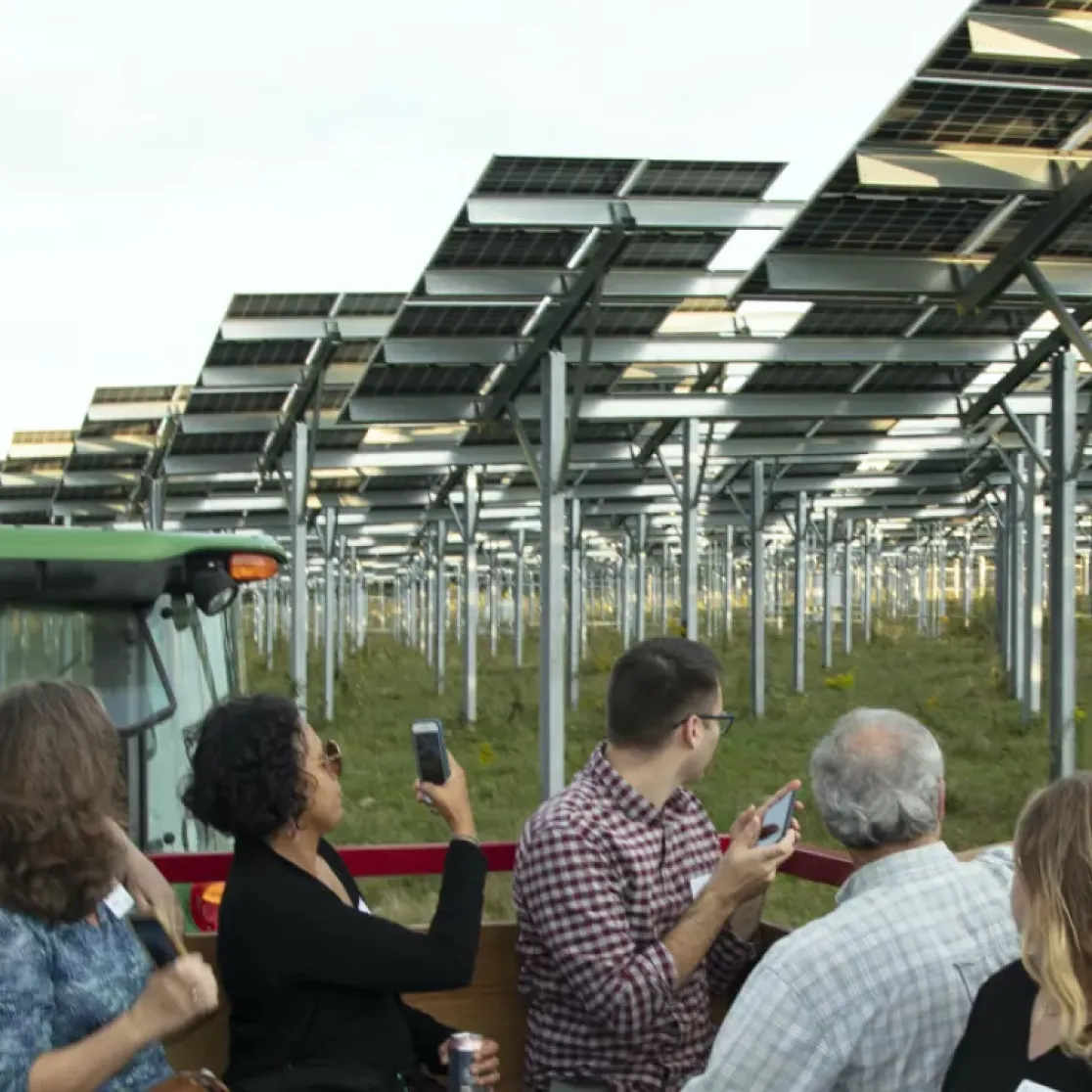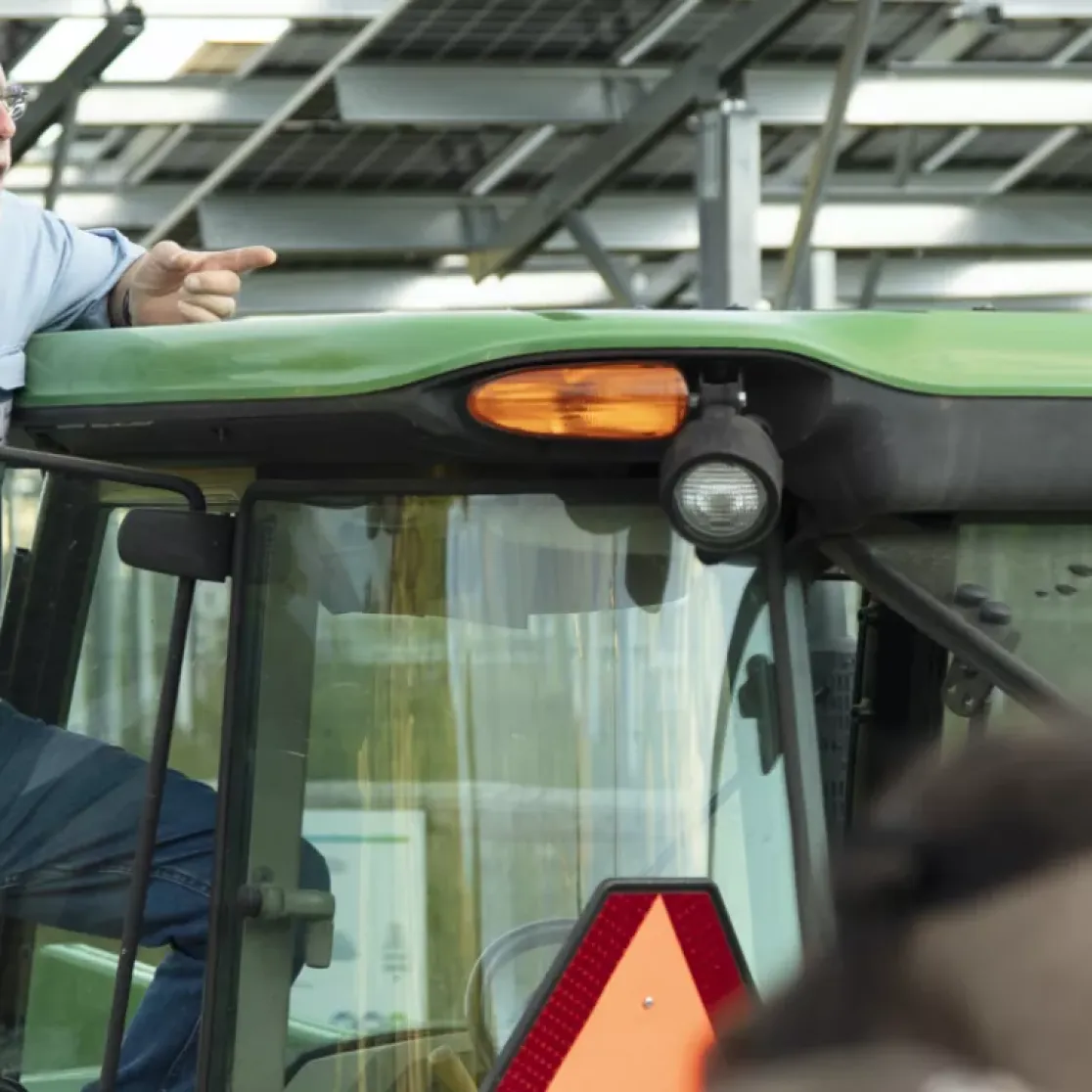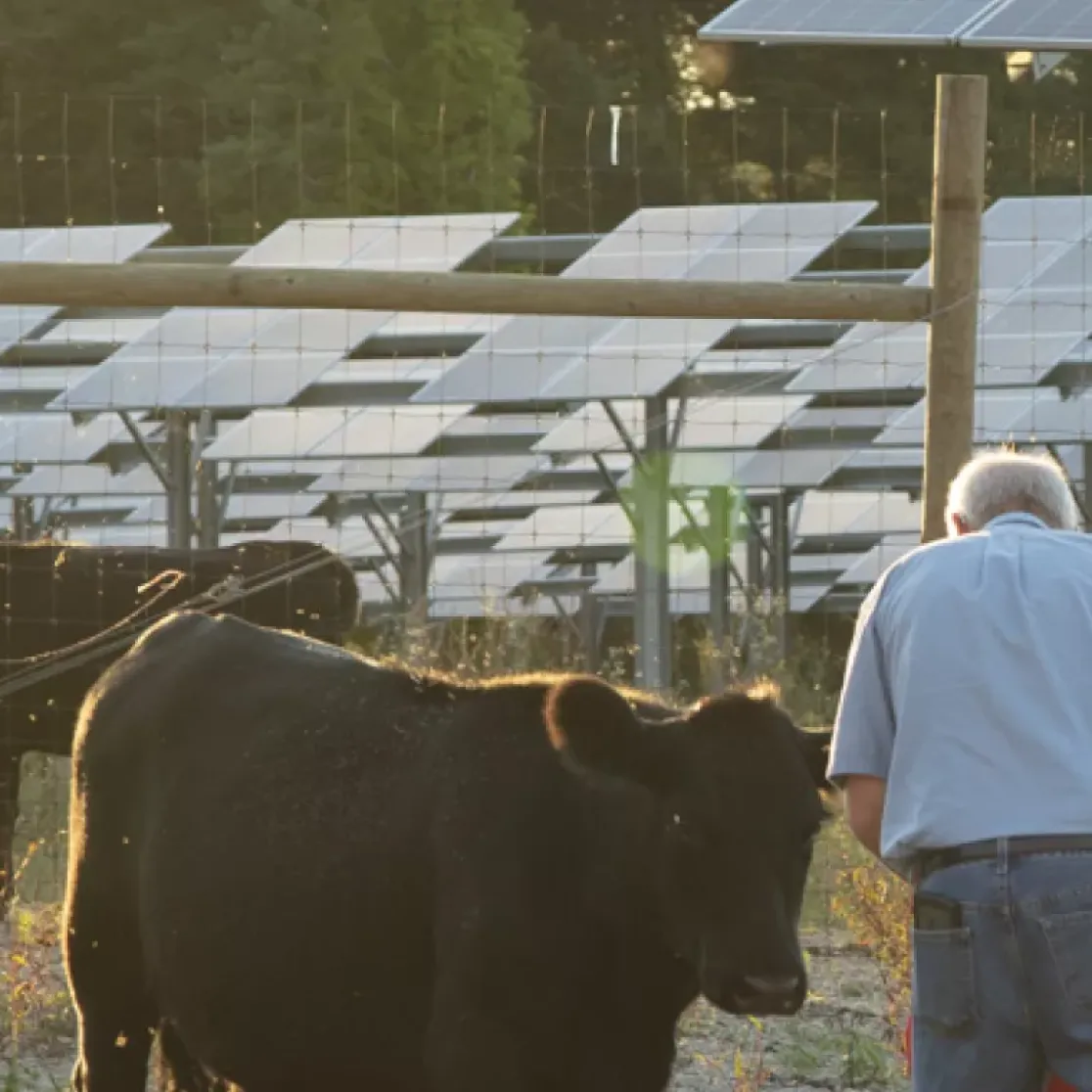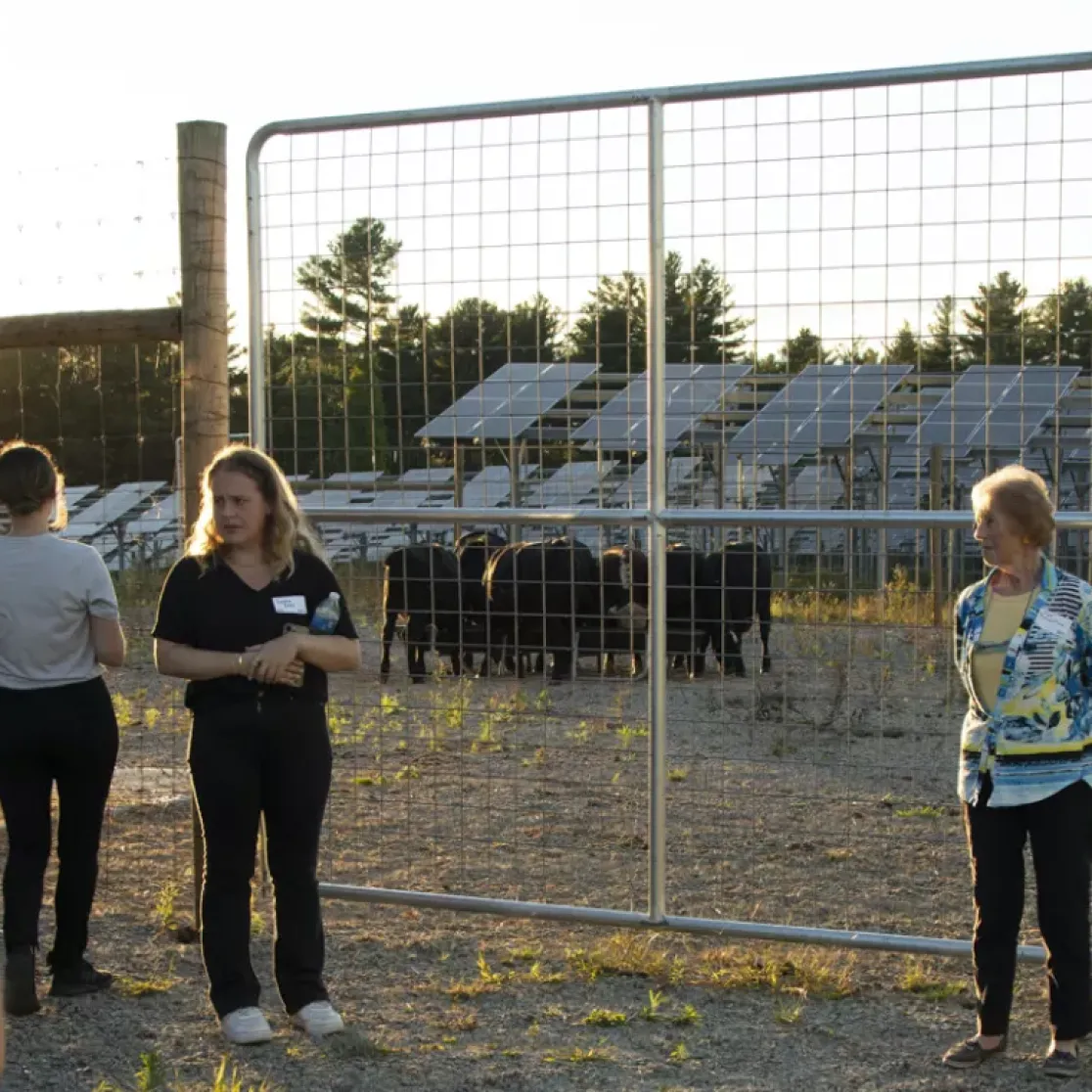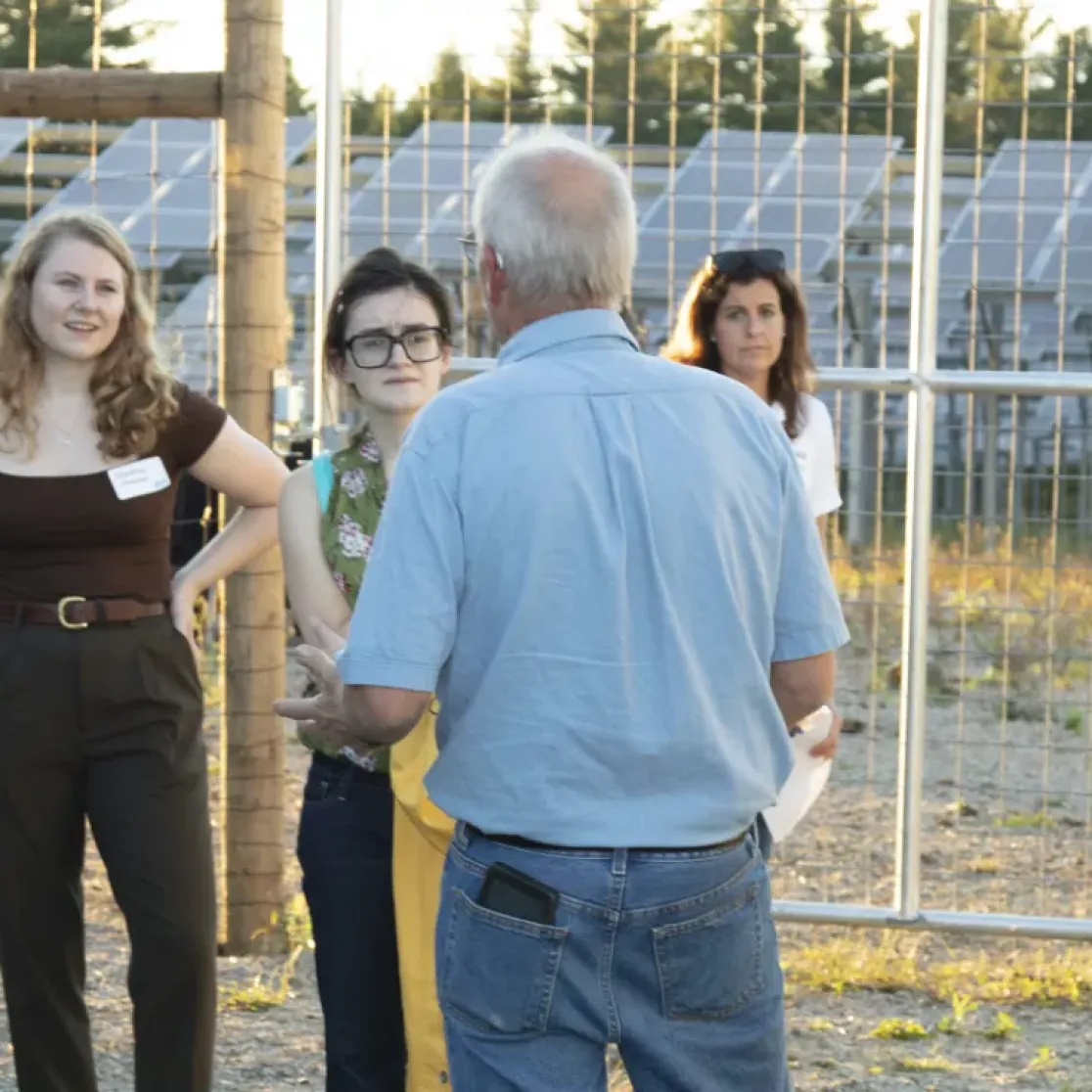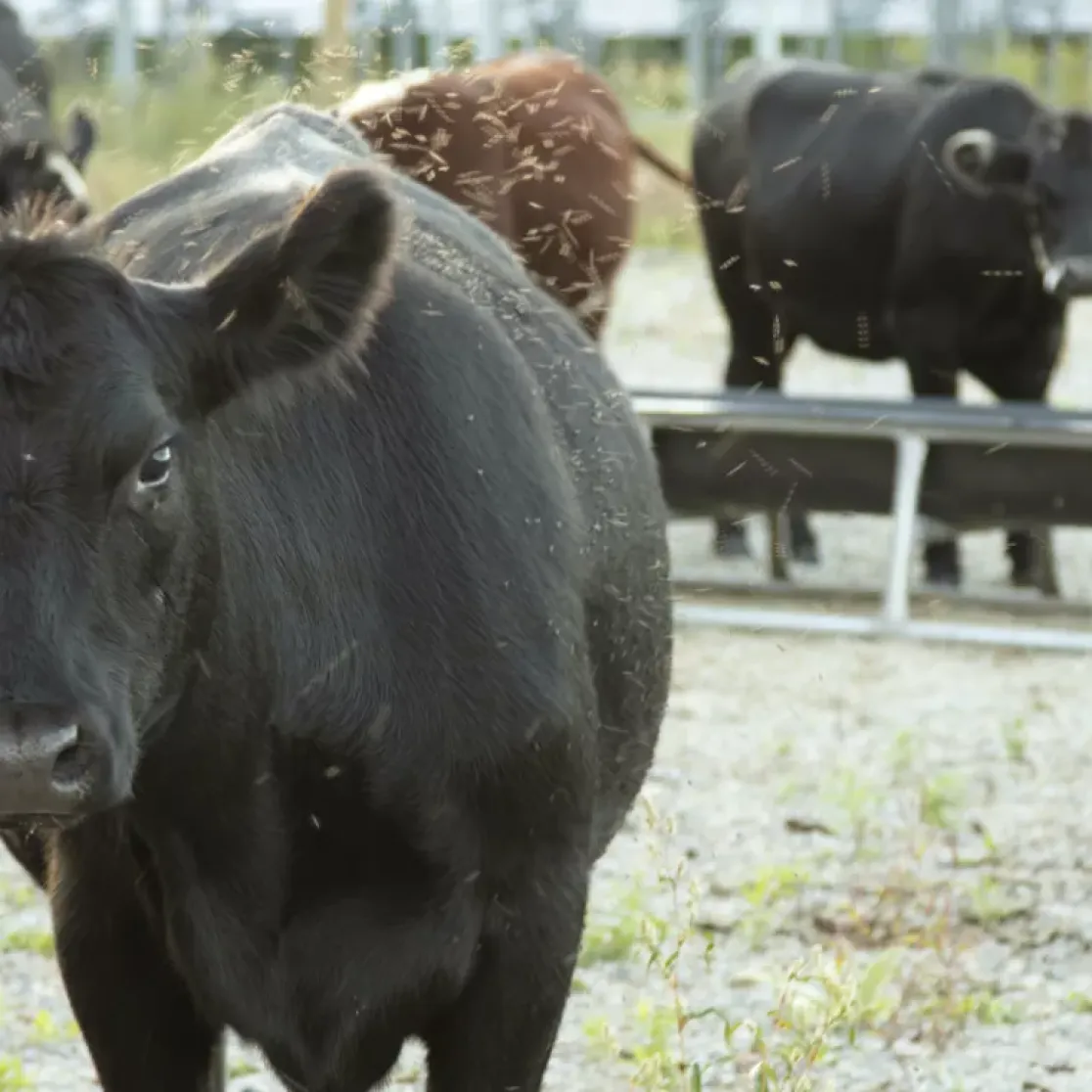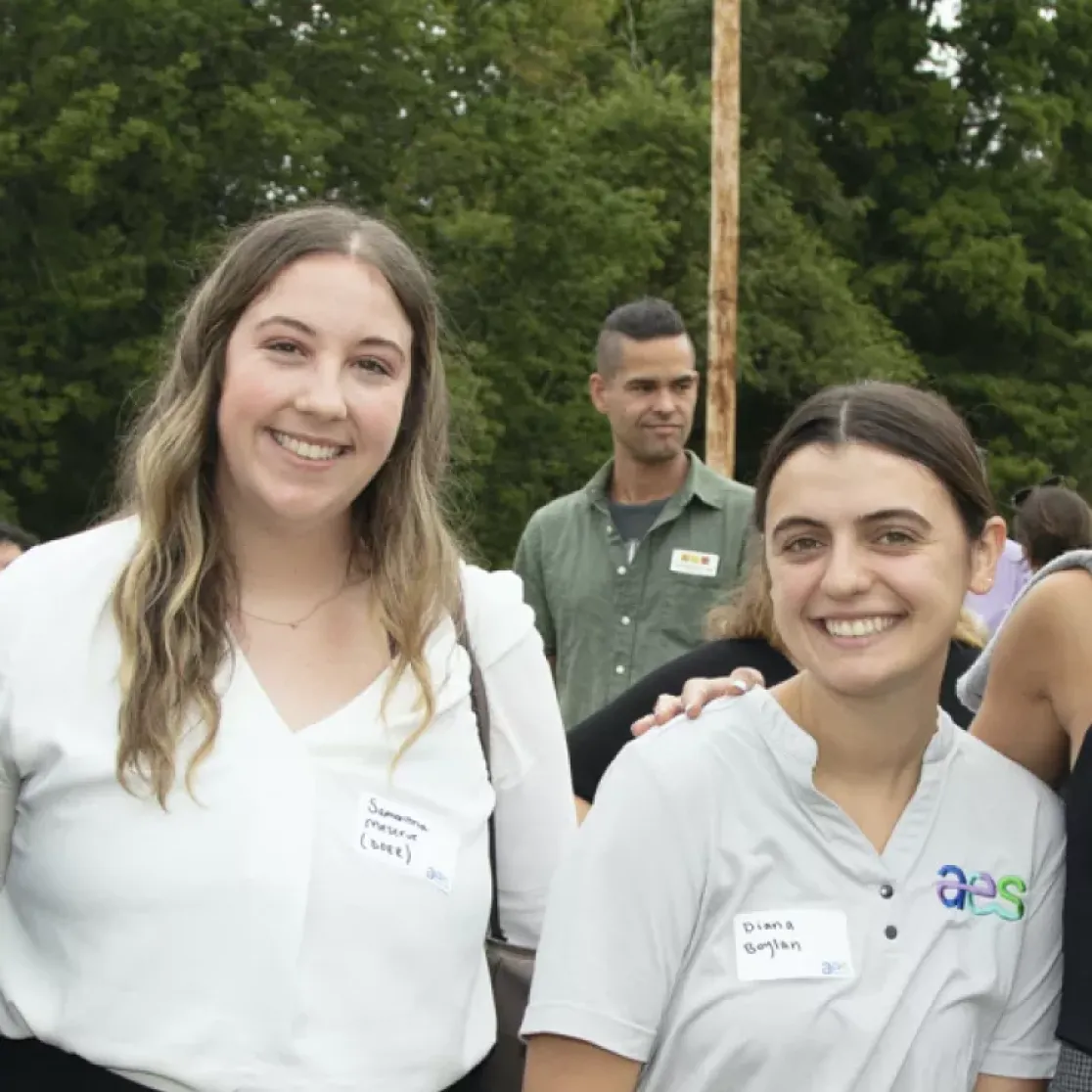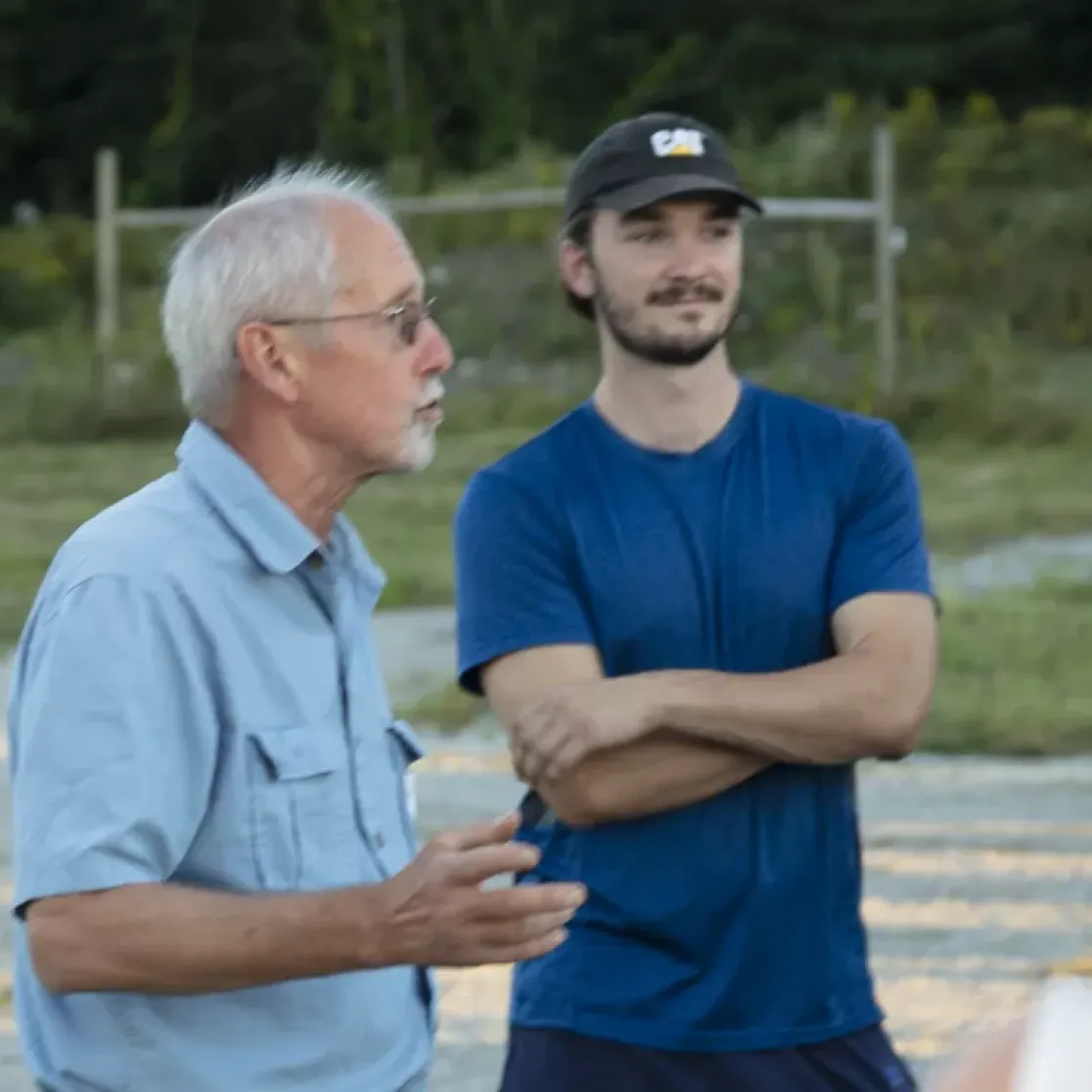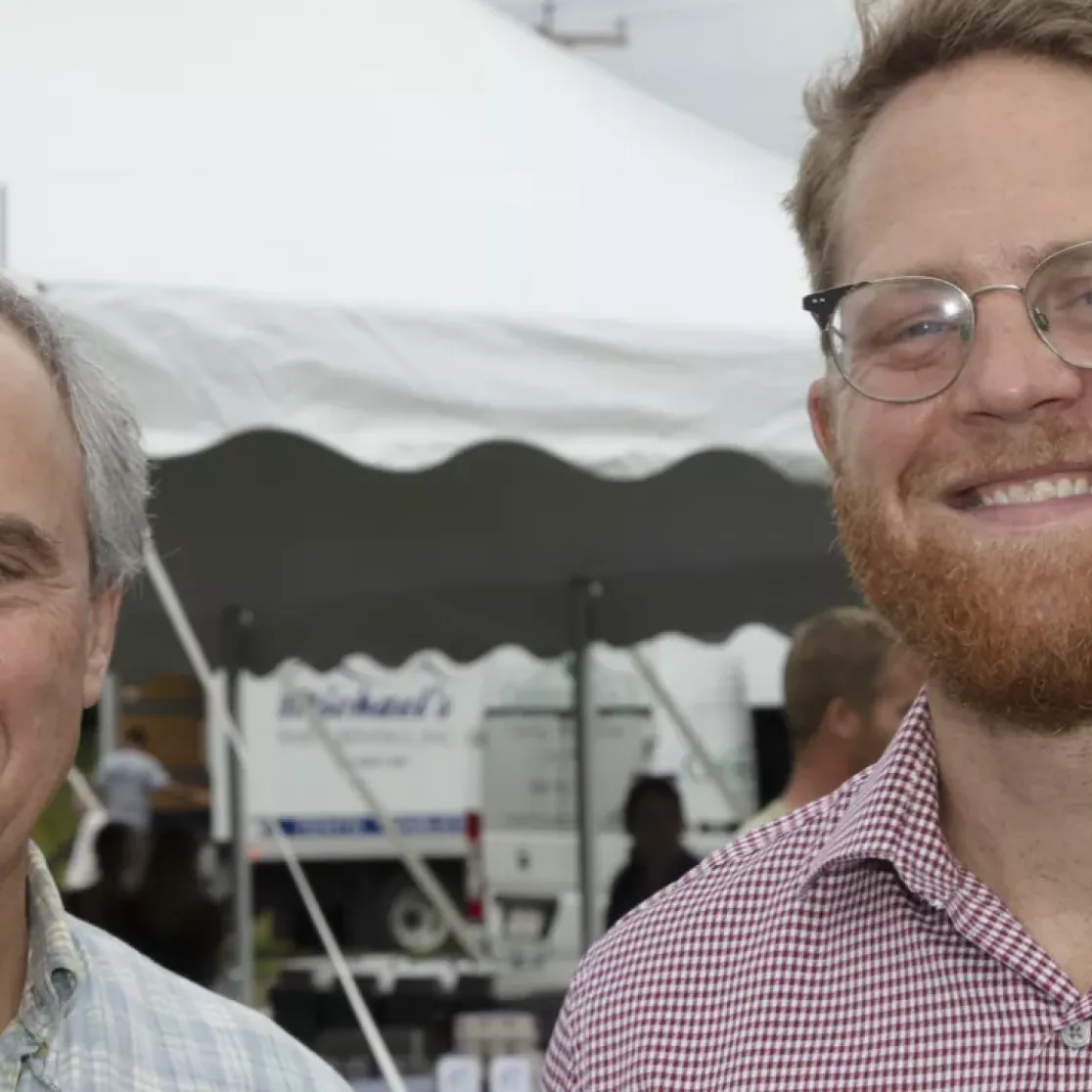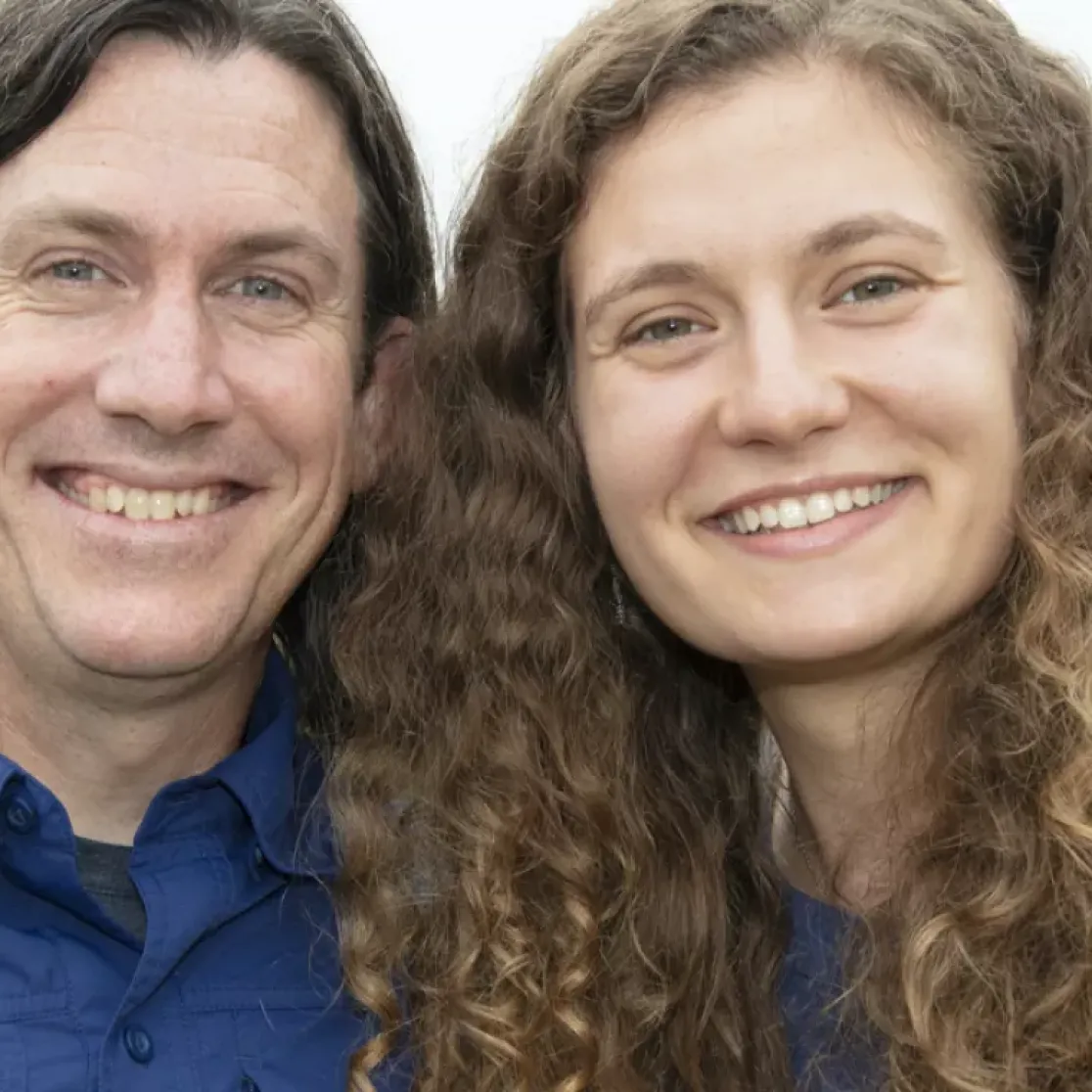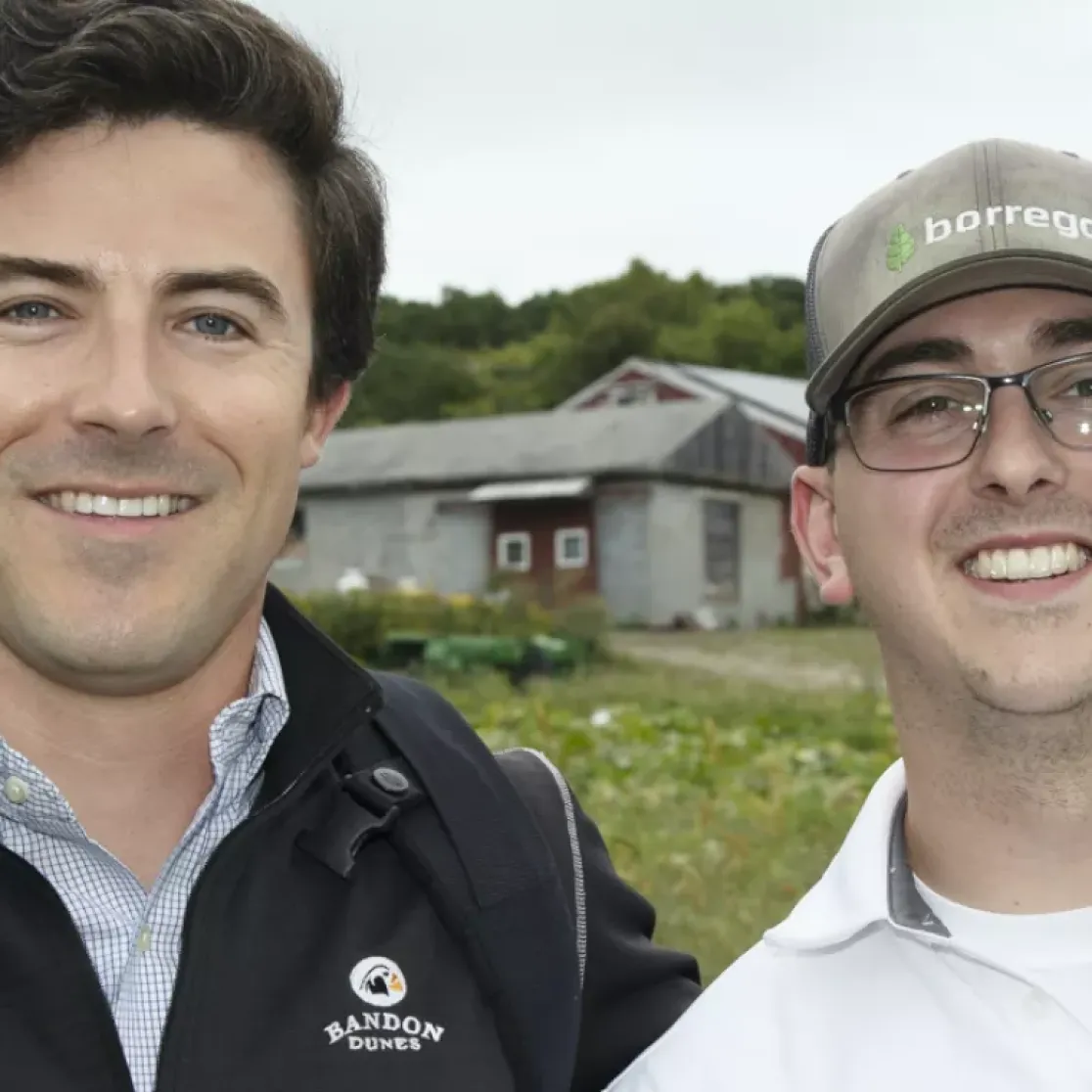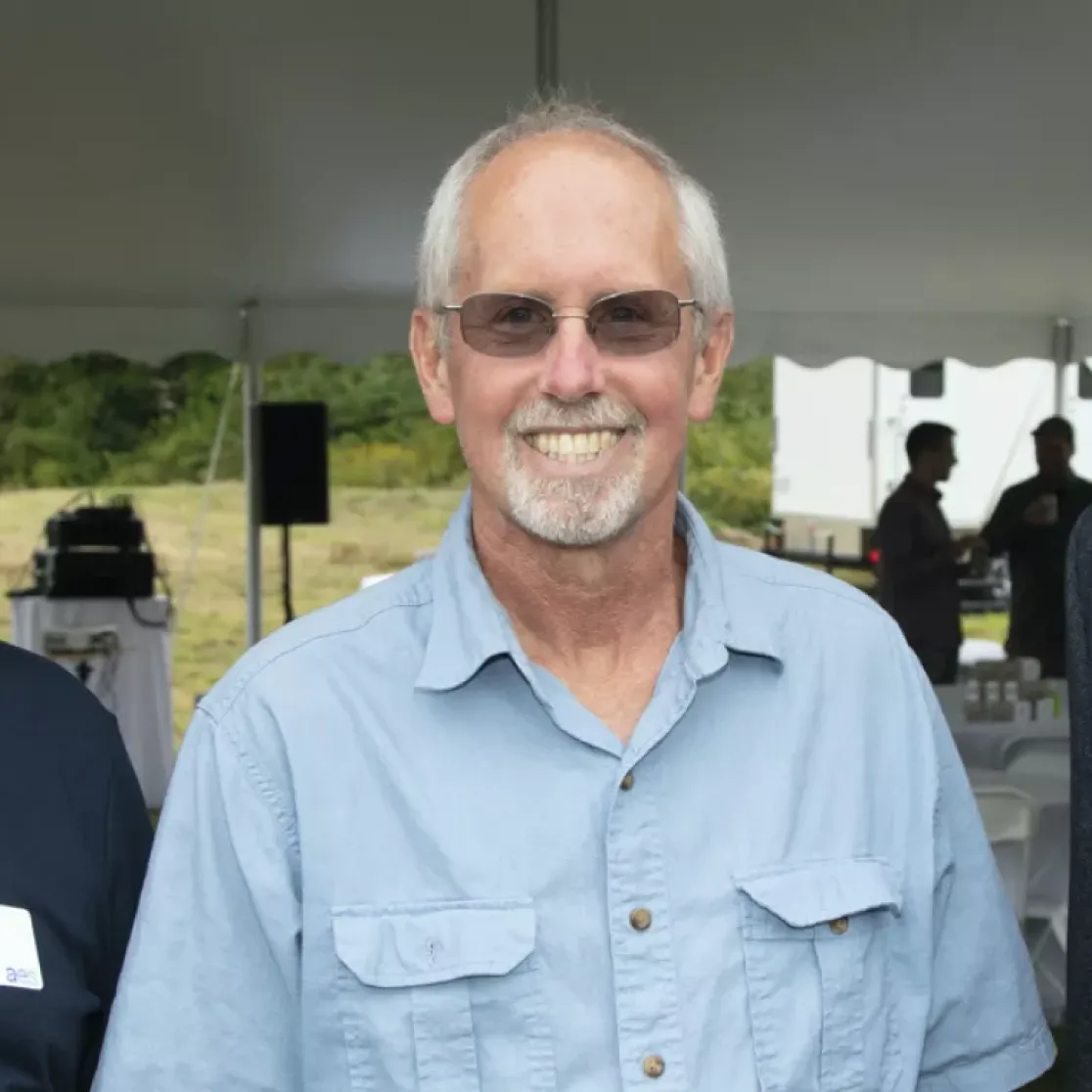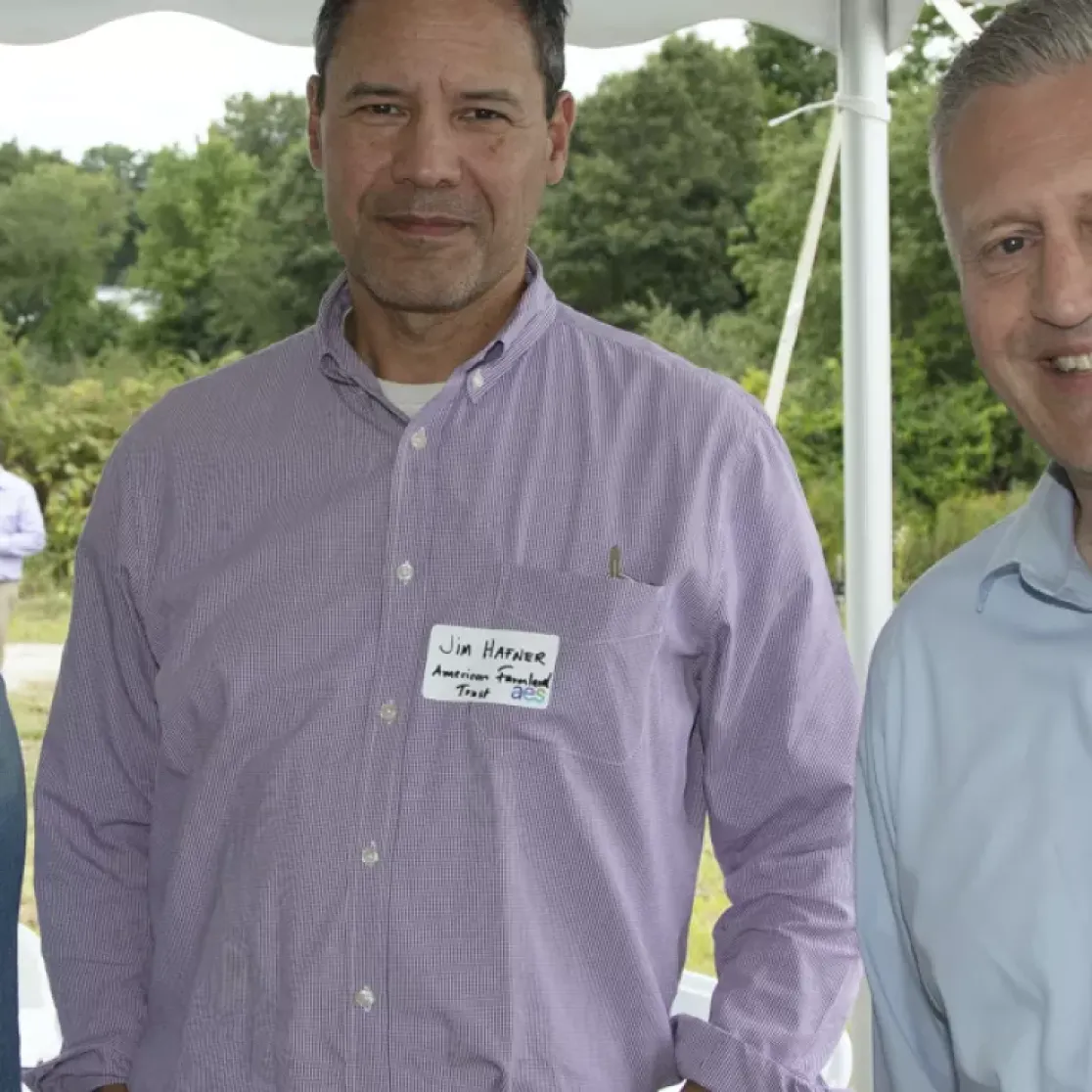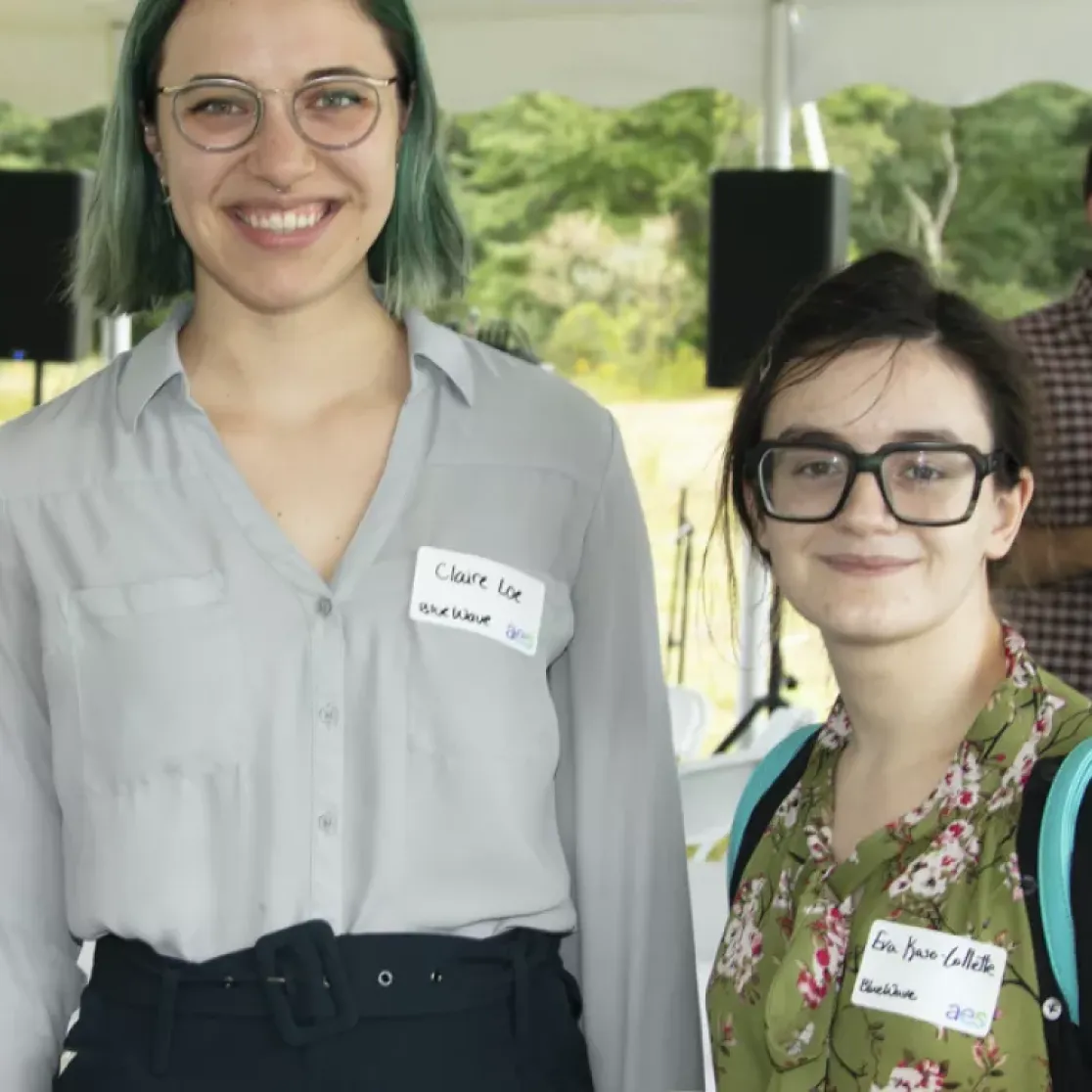SOLAR POWER IN MASSACHUSSETS
Grafton solar + storage project
AES' Grafton solar project is an innovative 2 MW community solar farm accompanied by an additional 1.4 MW of battery energy storage capacity, located at Knowlton Farms in Grafton, MA. This cutting-edge project integrates solar energy generation, on-site agricultural production, and numerous research partnerships.
Grafton solar was designed with agricultural production and research at the forefront. The solar panels are elevated, with the lower edge of the panels being a minimum of 10'6" above ground level, and a larger spacing between panel rows to allow for unobstructed access for farm equipment and cattle grazing. These modifications from the standard solar facility design enhance agricultural production opportunities.
AES is exploring more long-term solutions in efficient dual-use systems. In the immediate term, we want to ensure environmentally sound practices. To do so, we continue to support research that can uncover actions that lead to best practices for the environmental and local communities.
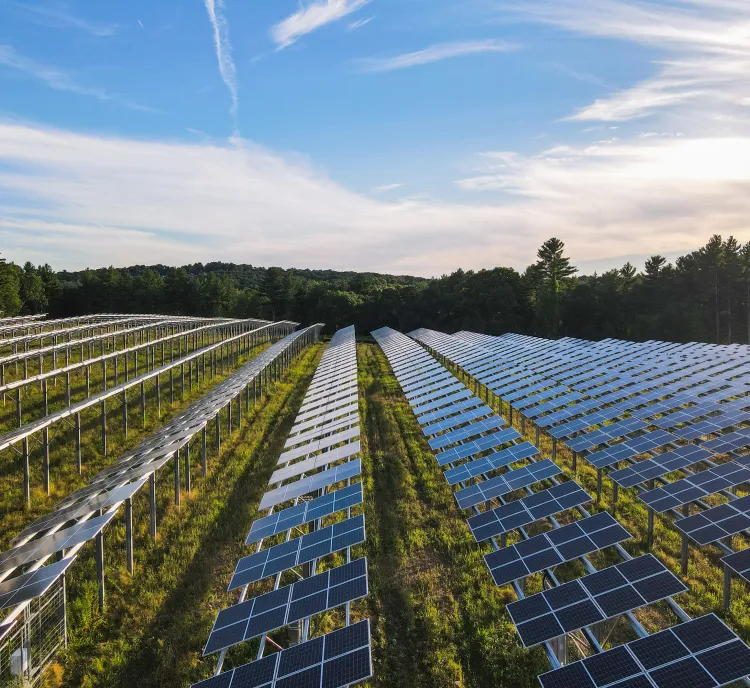
Our clean energy commitment
AES’ Grafton Solar Project is an operating facility in Massachusetts. We are committed to responsible clean energy development that creates long-term value and positive impact for both the environment and local communities.
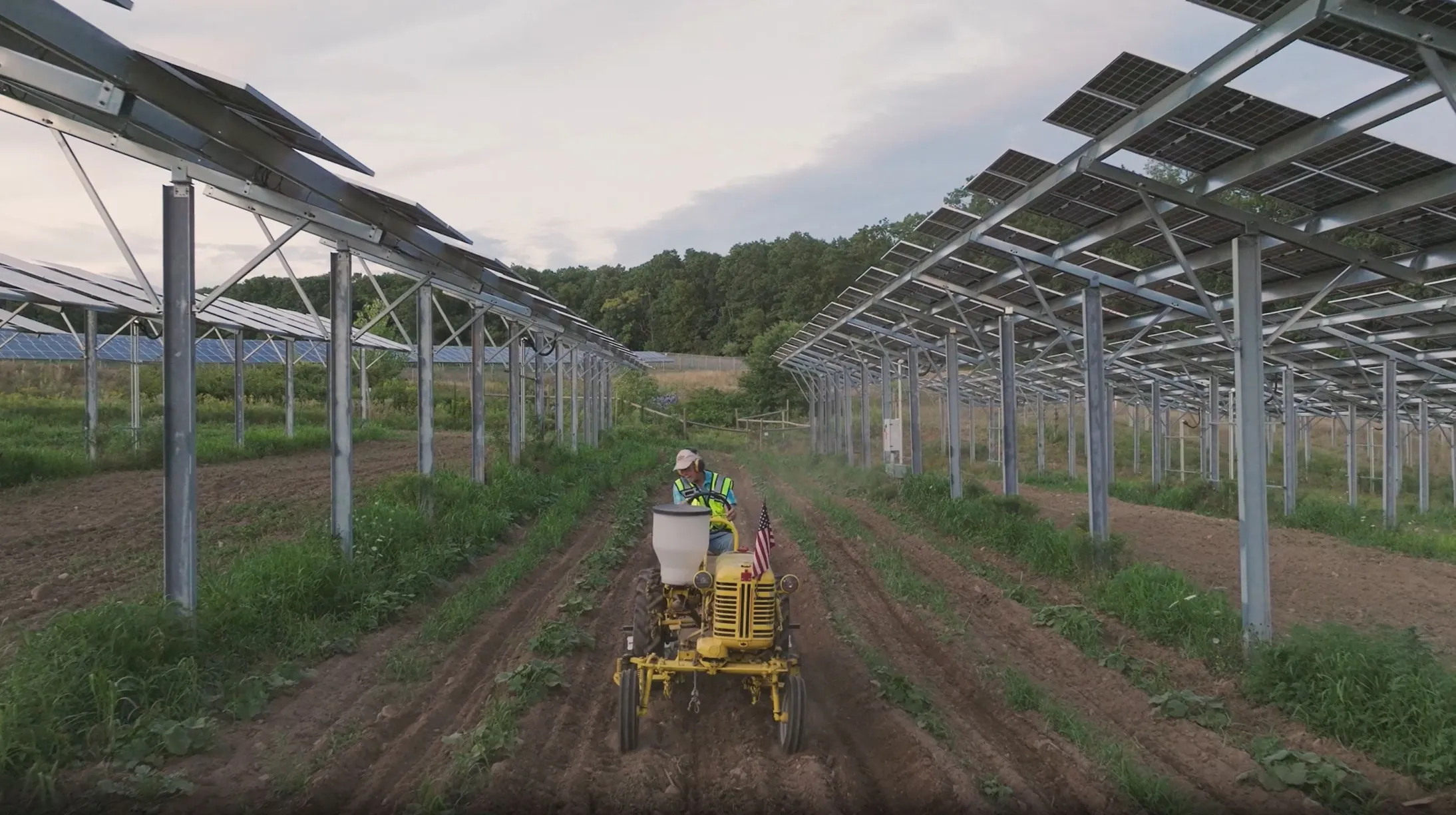
Economic and environmental benefits
Grafton solar is AES’ first agrivoltaic site in Massachusetts and the Northeast and combines solar energy production and crop cultivation in the same area. Environmental studies have been conducted to help design and position the solar project in a way that avoids and minimizes impacts to wetlands, wildlife, and cultural resources. Through thoughtful and sensitive design, the Grafton solar project seeks to be a good neighbor and a contributing member of the business and farming community.
When a solar project reaches the end of its lifespan, per the special use permit, the developer is responsible for decommissioning the solar farm.
This includes:
Knowlton Farms
The Knowlton family has been managing a variety of crops at their farm in Grafton for over 150 years. Ensuring the viability of the farmland for the next generation is their priority, and Paul Knowlton, the current operator of Knowlton Farms, works with consistent dedication to ensure the farm remains true to family tradition.
Thanks to the Grafton solar project, the Knowltons look forward to the potential of re-entering full-time farming after a decades-long hiatus. The potential of the regenerative farming practices enacted at the site, combined with the financial benefits of solar, will pay future steady dividends for the farm, both improving land quality and allowing for more crop output.
The Knowltons continue to expand on their investment in the land and plan to construct a commercial-scale greenhouse next to the vegetable array to enable year-round production. Knowlton Farms is fully committed to seeing through the potential of regenerative farming and solar, ensuring the Knowlton farming legacy will continue to thrive for the next generation and beyond.
Research at Grafton solar
There has been concern that solar farms are often located on formerly productive farmland. Yet, there is a shortage of data on the impacts of agricultural productivity and farm viability at solar project sites. The Grafton solar project is proud to serve as a research site trial for the U.S. Department of Energy Solar Energy Technology Office (SETO), through which data is being collected on precisely these topics. At Grafton solar, research partner UMass Amherst among others, are working to establish site trials and assess crop productivity, soil health, and micro-climatic conditions, to generate insights into the impact of co-locating agriculture and solar. AES continues to build and support these partnerships, with the goal of promoting understanding, future improvement & lessons learned in the field of agrivoltaics.
The Grafton solar project:
- Incorporates rotational cattle grazing, a practice known to boost plant, soil, and animal health.
- Shade from the solar panels helps reduce heat stress levels in cattle during the summertime.
- During the initial 2022 growing season, squash and lettuce are also being cultivated on the project site.
Agrivolatics + solar
The goal of research at Grafton solar is to make agricultural production at solar farms feasible and practical for future renewable projects in the future. This initiative is consistent with AES’ vision to provide smarter, greener energy solutions the world needs.
- Leveraging partnerships to promote research and education opportunities can help advance the potential and frequency of agricultural production at AES projects.
- These opportunities generate learnings for other energy companies while promoting community engagement and economic development opportunities.
- This enables AES to continue leading the future of clean energy with innovative approaches to sustainable solar development.
Once collected and compiled, research information will be made publicly available. This research has been made possible due to the collaborative efforts of the following institutions:
Grafton solar project
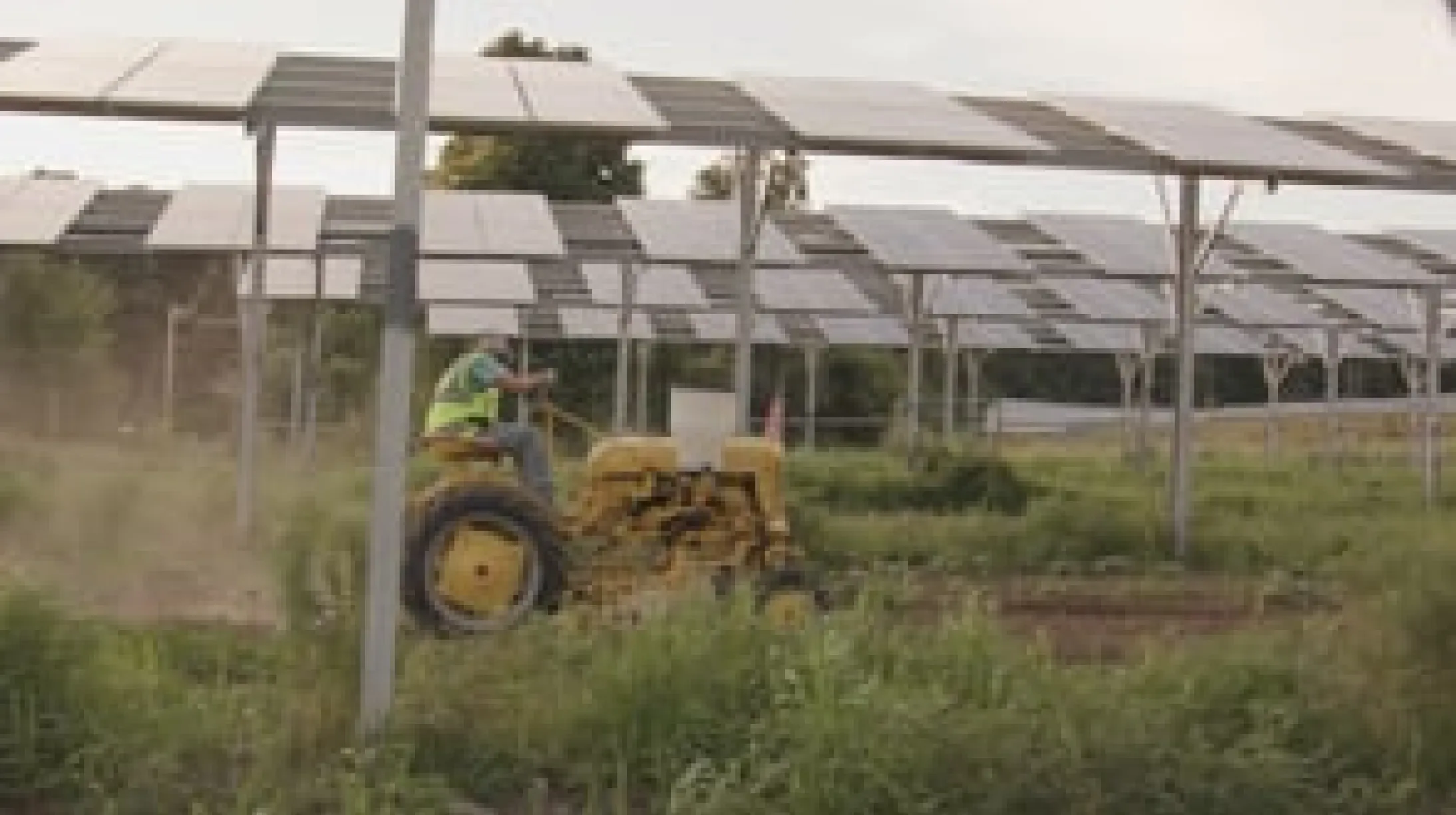
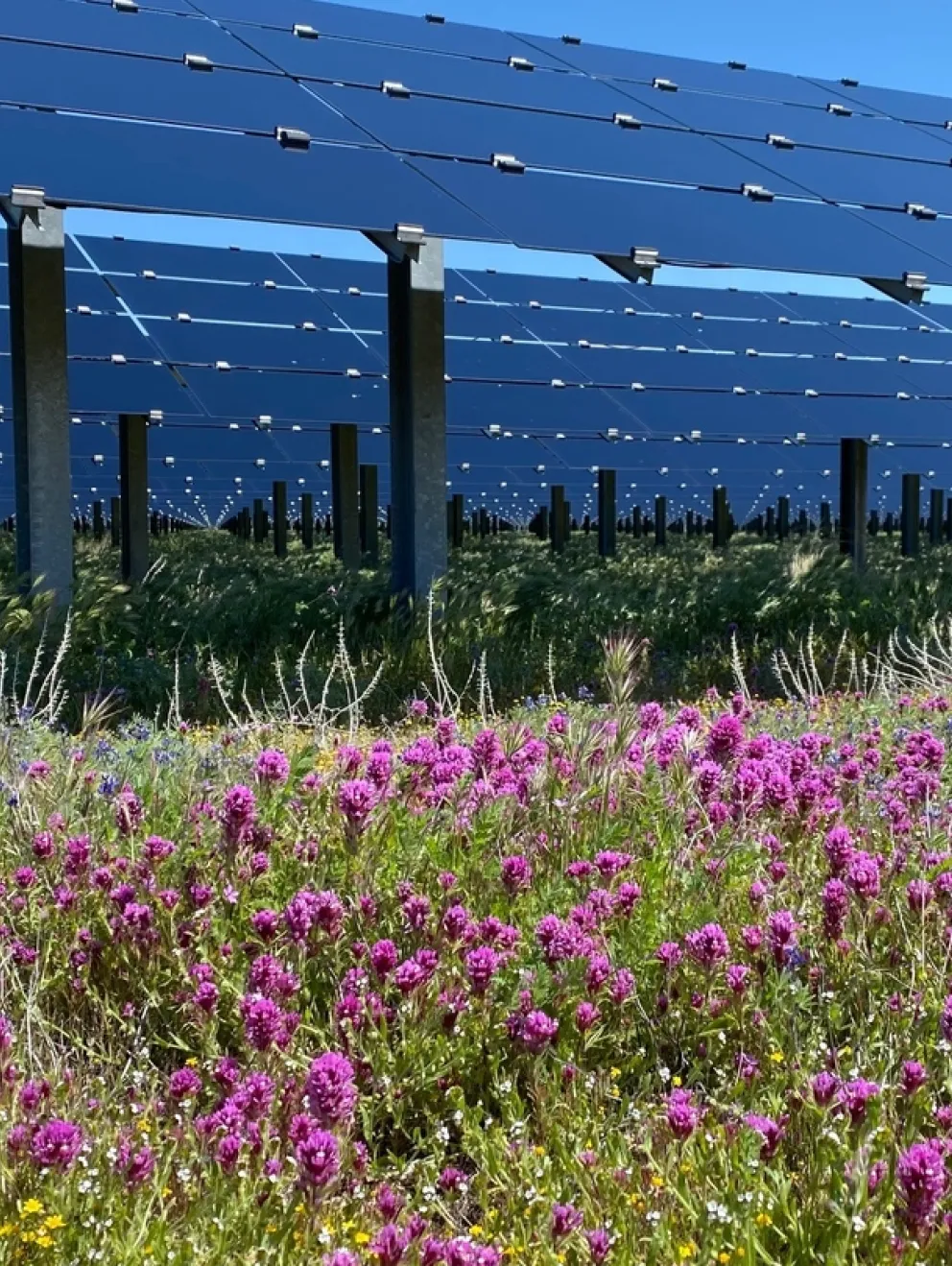
COMMUNITY SOLAR BENEFITS
What is community solar?
Grafton solar is a community solar project. Community solar expands access to renewable energy and allows local subscribers like households, businesses, educational institutions, municipalities, and more to experience the benefits of solar power without incurring an upfront cost or installing solar panels on their roofs/on-site. Subscribers to the Grafton solar project include the City of Lynn and other small commercial entities in Massachusetts.
Who is eligible?
Subscriptions are open to qualified residential and commercial utility customers of National Grid, including:
- Homeowners
- Condo and apartment renters
- Government entities & school districts
- Small businesses & religious institutions
Why choose community solar?
- No solar panels on your rooftop or property
- Benefit from clean, renewable, locally produced energy
- Tangible economic benefit via savings on your utility bill
- No responsibility for solar system upkeep and maintenance
Signing up
- You can subscribe to a portion of the production of an AES-owned community solar project, based on your electricity usage.
- Apply through AES or one of our community solar customer acquisition partners.
- Sign a short-term contract with customer-friendly cancellation provisions and no upfront payment.
How it works
Your electric bill:
- You receive your portion of power as “solar energy credits” that appear on your electric bill. These credits offset the final balance you owe your utility for your electric consumption.
- There is no need for an additional bill, and all credits will be applied to your current utility bill.
Your savings:
- After you receive your credits, the amount you owe your utility company for your electricity will be less.
MA SMART
The Solar Massachusetts Renewable Target (SMART) Program, launched in 2018, is the Department of Energy Resources (DOER)'s incentive program, which supports the development of solar in Massachusetts. The SMART program is the underlying program that provides revenue to the Grafton solar project. The DOER regulation articulated in 225 CMR 20.00 sets the regulatory framework for this program. The tariff-based incentive is paid directly by the utility company (in this case, National Grid) to the system owner (in this case, AES), following the approval of the application by the Solar Program Administrator and DOER.
The SMART Program is a 3,200 MW declining block incentive program. Eligible projects must be interconnected by one of three investor-owned utility companies in Massachusetts: Eversource, National Grid, and Unitil. Each utility has established blocks that decline in incentive rates between each block.
The SMART program was introduced to help reach the state’s solar installation goals, and replaced Massachusetts' previous incentive program, Solar Renewable Energy Certificate (SRECs). In April 2020, the SMART program was doubled to offer higher incentives to further support the state’s renewable energy standard goal and sustain the solar industry through the challenges posed by the COVID-19 pandemic.
Information on the SMART Program design and launch can be found in the following presentation:
SMART Program Design and Launch
For more information on the MA SMART program, please visit the Mass.gov website:
Solar Massachusetts Renewable Target (SMART) Program | Mass.gov:
Project Timeline
Grafton solar community engagement
AES continues to expand on best practices in community engagement with the Grafton solar project. While respecting the privacy of our landowner and protecting the integrity of the site, AES has coordinated the following educational tours and events:
- August 10, 2022: Agrisolar ClearinghouseFollow the Sun Tour: Massachusetts
- September 12, 2022: AES Grafton Solar Celebration(event program linked here)
- September 18, 2022: Site tour with theAmerican Farmland Trust Board of Directors
Grafton solar Celebration photo gallery:
Partnerships




Contact us
We want to hear from you! For any inquiries or comments about Grafton solar, please contact the AES Northeast Stakeholder Relations team directly at:
Office Address: 292 Madison Avenue 15th Floor New York, NY 10017
Have a question or comment for AES about our work in your community? Give us a call during these hours to talk to a company representative.
Every Monday from 11:00 AM to 1:00 PM ET
Every Thursday from 4:00 PM to 6:00 PM ET

